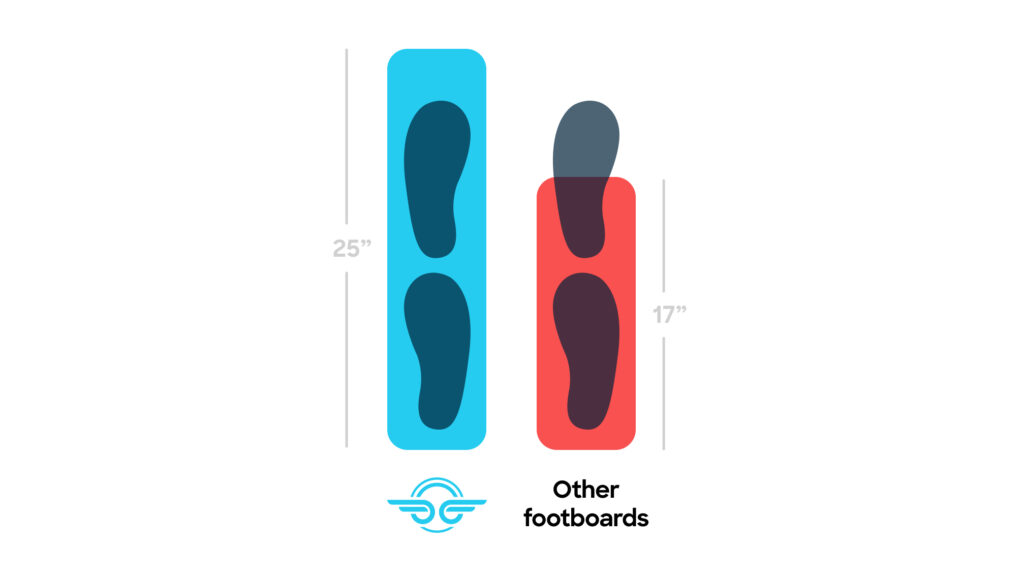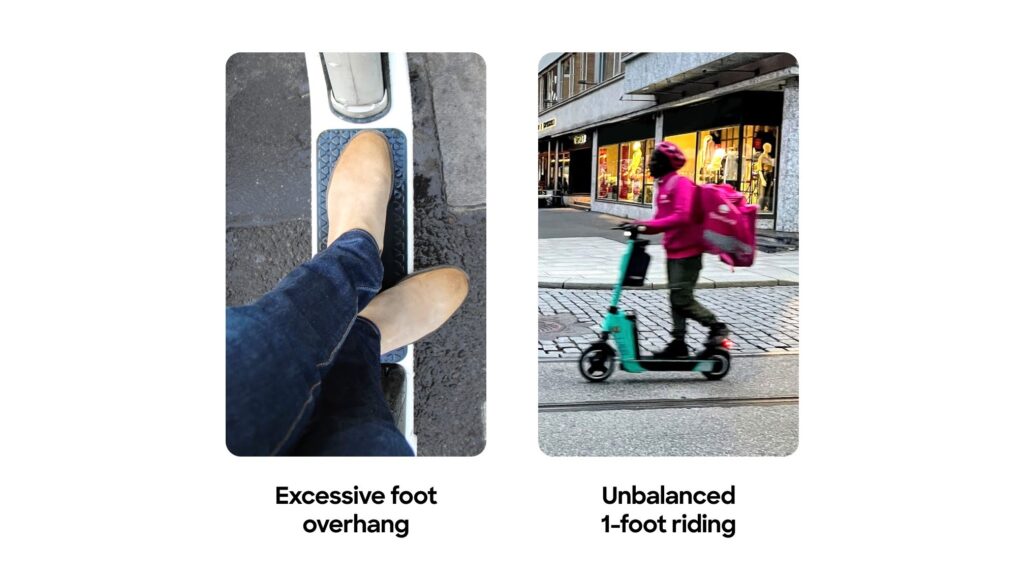There are generally two types of first-time scooter riders:
- Those who immediately adapt to the balancing and maneuverability of this new, fun and sustainable mode of transportation, and
- Those who require a few minutes of test riding before feeling right at home
No matter which camp you fall into, however, one thing is certain: the more properly sized the footboard, the more stable and inclusive the riding experience.
This critical fact of physics and engineering is the reason Bird’s newest shared micro-electric vehicles are built with the longest footboards in the industry. The idea was first explored in an April, 2020 study on micromobility vehicle dynamics published by the Society of Automotive Engineers (SAE). One of the study’s authors, expert Biomechanist Dr. Christina Garman, was hired by Bird after its publication.
The first-of-its-kind study found that, in general, scooter operations are both rider dependent and difficult to predict. Some riders prefer to stand in a linear fashion with their dominant foot forward, others in a linear fashion with their non-dominant foot forward. Still others stand with their feet side by side, parallel to each other. Each of these positions has an impact on a rider’s base of support, which in turn impacts how a scooter turns, brakes and accelerates.
The best way to account for all of these variables, according to the study, is to design vehicles that accommodate, within reason, as many riding styles and rider sizes as possible. And to do that, the proper footboard size is key.

The footboards on our newest Bird Three scooters measure 25” (63.5 cm)—intentionally longer than any other shared scooter currently in operation. We’ve done this not only to increase our riders’ comfort and stability at any speed, but to allow for the greatest variety of potential rider sizes as well.
Our research indicates that footboards under 18” (46cm) in length, similar to the design dimensions of toy scooters, present significant stability and inclusivity issues. These may prevent large swaths of riders from standing safely and comfortably on a scooter. A footboard with a 17” (43 cm) length, for example, corresponds to a woman’s size 4 shoe when standing in linear fashion. Such reduced foot space isn’t only exclusionary; it can be an imbalancing factor that presents safety concerns for larger riders, forcing them to stand with significant parts of their feet unsupported over the edge of the footboard.
“Balance can be defined as the capability of keeping the center of mass (COM) over its base of support (BOS), and a larger BOS provides greater stability,” said Dr. Hoda Koushyar, an expert in both biomechanics and human performance/stability and a professor at Tufts University. “For scooter riding, the more surface area of the foot that is in contact with the deck, the greater the rider’s BOS. Therefore, a wider and longer deck would provide the opportunity for the individual to manipulate and move their feet allowing for BOS adjustment and increasing stability.”

All Bird shared scooters have footboards that measure above 18 inches—a threshold we hope will be implemented by all cities and operators to help improve safety and rider inclusiveness.
Design choices such as footboard size, wider, more comfortable handlebars and intuitive riding features like Beginner Mode are all part of what makes Bird vehicles that much safer and more enjoyable to ride. To learn more about Bird’s award-winning and technologically advanced vehicle designs, subscribe to the Bird Cities Blog.
